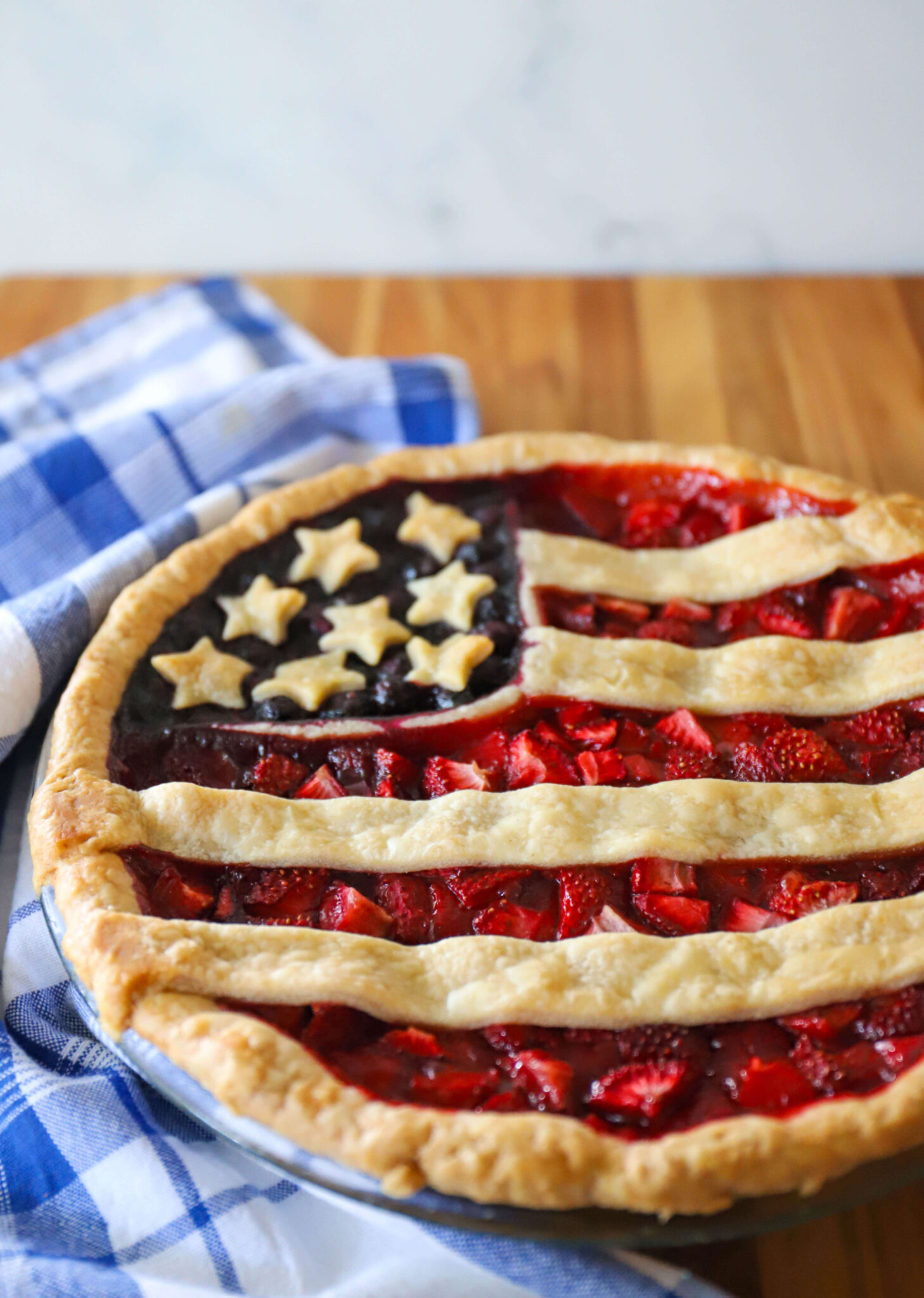Blind baking pie crust is when you bake a crust without any filling in it. Blind baking is often used for cold, custard pies, like Chocolate Cream Pie or Key Lime Pie. With these pies, the filling is not cooked in the oven, so the crust needs to be fully cooked separately.
Par baking is a form of blind baking. Par baking is when you partially bake a pie crust using blind baking (without filling). Par baking is often used when people want a crisp crust under a pie with a warm filing, like pumpkin. You only partially bake the crust in that scenario because, once you add the filling, you’ll continue to cook the crust in the oven for another 35 to 40 minutes.
The trouble with blind baking is that the crust has a tendency to sink down into the pie plate when there’s no filling inside to hold it up. To prevent the crust from sinking, people often line the crust with parchment and then use pie weights (which can be expensive), rice or beans to serve as a “pseudo filling” while blind baking. I don’t own pie weights and rarely have enough dried beans on hand when I need them. Once when I used rice, it was a disaster! As I attempted to lift out the parchment, half the rice fell into the partially-uncooked crust and I spent about 20 minutes picking out individual kernels!
So I decided there had to be an easier way. Enter disposable aluminum pie plates. They cost less than a dollar a piece at most grocery stores. And guess what? They’re oven proof and fit perfectly inside an unbaked pie crust! Simply flatten out the lip of the aluminum pie plate (just takes a minute) and then set it into your unbaked crust. Then weigh it down with an oven-proof ramekin so the crust doesn’t bubble up while baking. All of a sudden, blind baking is a piece of cake! Or should I say pie?













3 Responses
Hi Marie – Many thanks for sharing your wonderful recipes and some tips to make it easier for us to bake especially handling pie crusts. My only concerned was using the foil plate for par baking. I heard that foil is toxic and not to be used on food especially when it is heated. Please advise thank you. Also, would you be interested in doing gluten free baking in the near future?
Raquel
Hello Raquel! Thank you for your comment! I try to be fairly up-to-speed on safe and non-toxic materials but I haven’t done a lot of reading on foil so appreciate the head’s up! I hear about it often but clearly need to look into it a little more deeply 🙂 Anyway, if you’d rather not use foil you can definitely use parchment paper filled with beans or pie weights. Our you could look for an 8-inch pie plate made of another material and use the other technique I suggest. Hope that helps and thanks again for your insightful note! Hugs, marie
Marie,
What size pyrex bowl do you use to mix your dough in? Also, I tried butter vs crisco shortening in the can. I did the test with both for one pie (not a good test) but, the butter by far was better to work with, and flaky. I had done one of your pie crusts before with butter and your instructions were great, truly better than store bought. I’d given up on making my own, then watched your video.
Note: to viewers if you put the dough in the freezer for 1 hour it does need to rest on the counter for at least 10 minutes in order to work it without it cracking. If it does crack around the edges just form it into a disc, but you need to work quickly as the butter softens quicker than you think. A mat is great you can always pop it into the frig and chill if the butter is melting. You’ll know it, because it the dough will stick to your rolling pin, and mat.